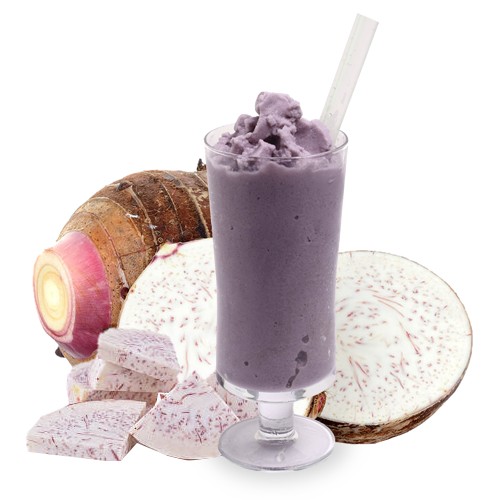

You will often see the Taro plant in its usual white flesh with brown skin and tiny purple spots here and there. The roots of the plant often take different colors, they are white, pink, or purple the color appeal is dependent on where the plant is cultivated from. Taro is the root vegetable of the plant, Aracea, the leaves of the plant come in a heart shape and it is edible. The tea milk is today cultivated in different parts of the world, like Venezuela, Brazil, and Hawaii.

The tea milk originally belongs to the tropical regions of south India and Asia. Let’s get started from this important point, knowing what Taro is and is not, is as important as the taste of the tea. Let’s dive in right away, to get the details that matter to us. This article will cover this point, and expose you to other information you will love about Taro milk. Wondering what the milk tea tastes like? You are in safe havens, with nothing to worry about. It is loaded with a fine dose of nutritional value, that you will surely love. This perfect beverage will keep you refreshed all summer. Where the temperature is more consistent and won't be affected much when you open your freezer door.Taro milk tea became very popular in the late ’80s, its origin is traceable to South East Asia, India, and France. Lastly, store it at the very back of your freezer. So try to minimize pulling it out of your freezer too often and letting it melt then freeze again. Another common mistake is to "freeze-melt-freeze" the ice cream, this is a sure-fire way to make ice cream icy. This will keep in the moisture of the ice cream and prevent large ice crystals to form. First, make sure to press a sheet of plastic wrap, or parchment/wax paper on top of the ice cream mixture and keep it there. Storing it Right - there are a lot of reasons why homemade ice cream losses it's form and texture after storing but do not worry, there are simple fixes that can help you maintain it's deliciousness. However, if you prefer to have smoother, just put more time in mashing it as well during the mixing of butter and milk to the taro until it becomes very smooth. With or Without Bits?- I like having the added texture that those taro bits give me, it gives it an added texture to the overall yumminess of this desert. Since taro contains a lot of starch, I did not add egg yolks on this recipe anymore and still got the creamy consistency I am looking for If you are concerned with adding raw eggs you can try using pasteurized egg as a safer option. It also extends the shelf life and helps keep it from melting faster before it reaches our mouth. Using Egg Yolks- Adding egg yolk is one way to make your ice cream richer and smoother as it adds fats and protein to the mixture. For this no-churn ice cream recipe, whipping cream is the primary source of fat. This is because fat freezes differently compared to water, it's softer compared to ice. Foxy Tips for a Luscious Ice Creamįor Creamier Taro Ice Cream- the higher the fat content of your mixture, the creamier it becomes. It also does not require cooking so it is easy to make and allows you to explore with lots of different flavors. No-churn is a type of ice cream base that is made without the aid of an ice cream machine. It may seem strange to use a root crop for making ice-cream, but it is really delicious and has become a popular alternative for the usual vanilla and chocolate-flavored desserts.

You can also cover your hands with oil first so the substance does not cling, but in case it happens, you can rub table salt in the affected area then wash with cold water. I also highly recommend using gloves when peeling it as it can irritate your skin. Eating this raw can make your mouth feel numb and itchy because it contains a toxin called calcium oxalate. Handling Taro with CareĪs much as this vegetable boasts many health benefits, always remember to cook it properly. It is a source of good vitamins and minerals that help boost energy and metabolism. Taro is usually compared to potatoes but has a nutty and mildly sweet taste with higher fiber content. It is a swollen underground root called "corm" where starchy nutrients are stored used to fuel the growth of the Taro plant above. Taro or "Gabi" in Tagalog, is a tuberous root crop that grows in tropical climates and is one of the most common vegetables in the Philippines.


 0 kommentar(er)
0 kommentar(er)
